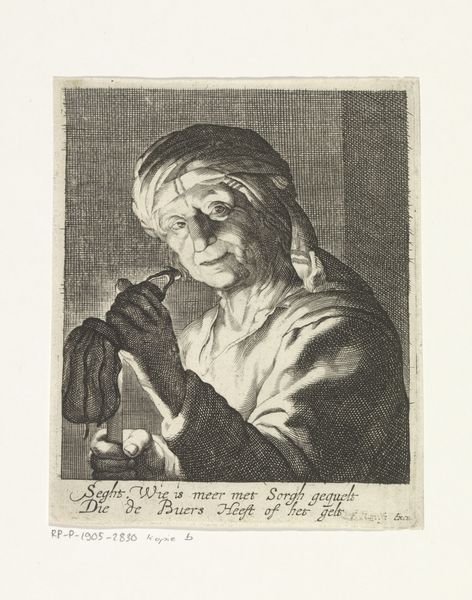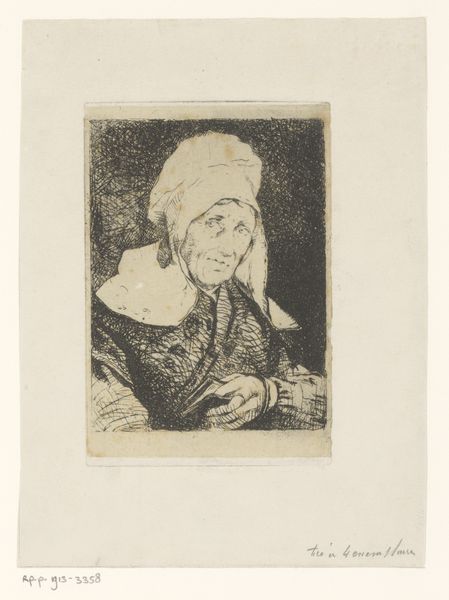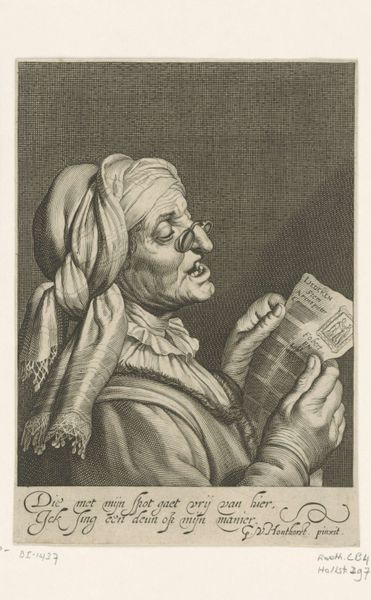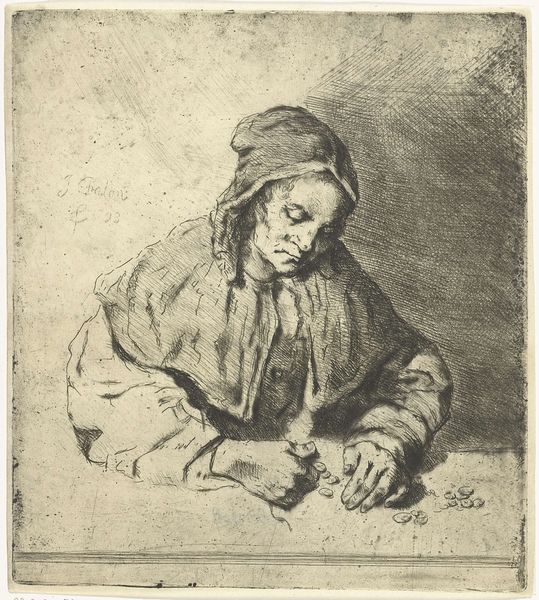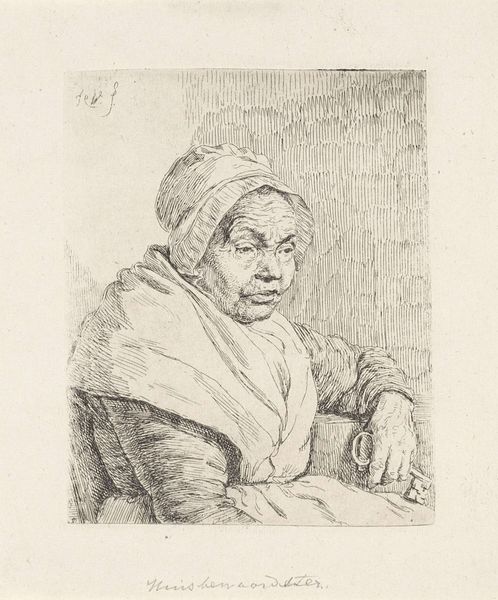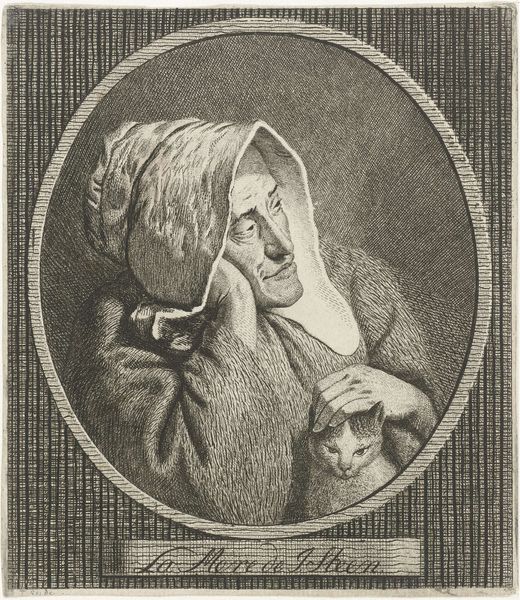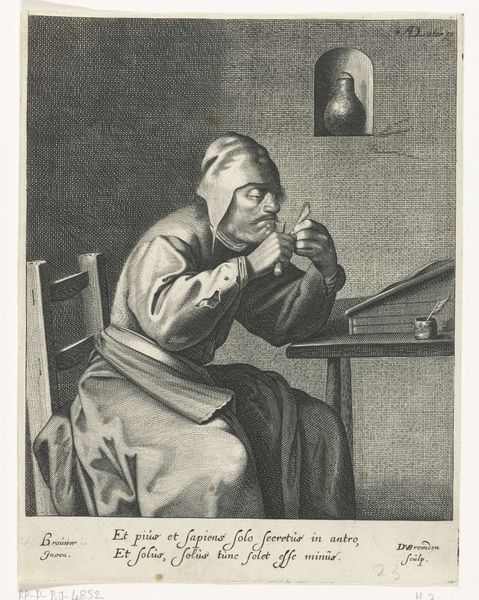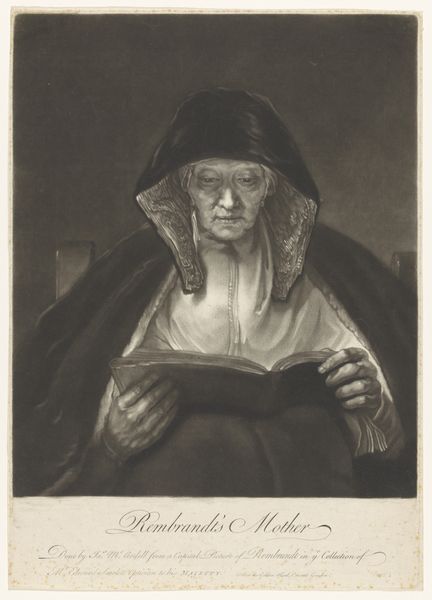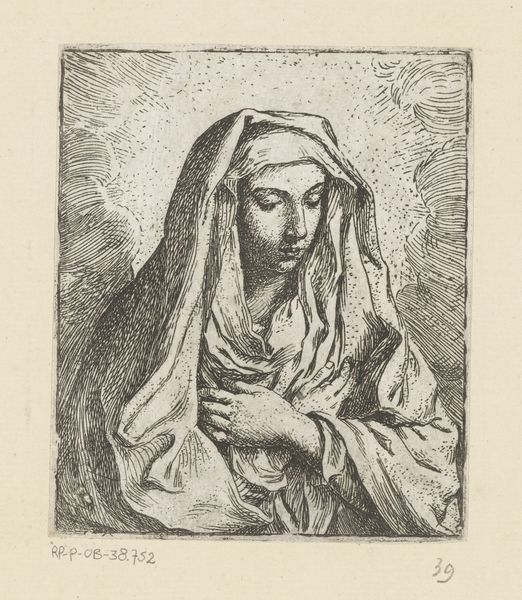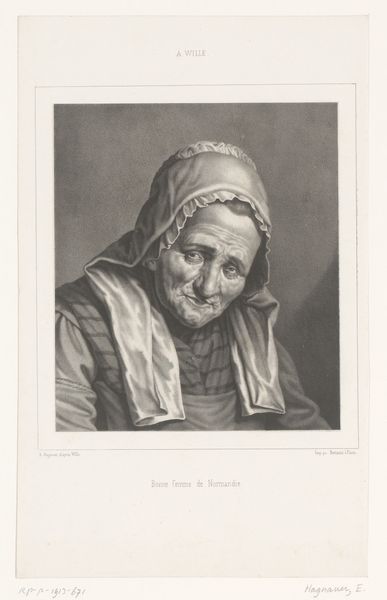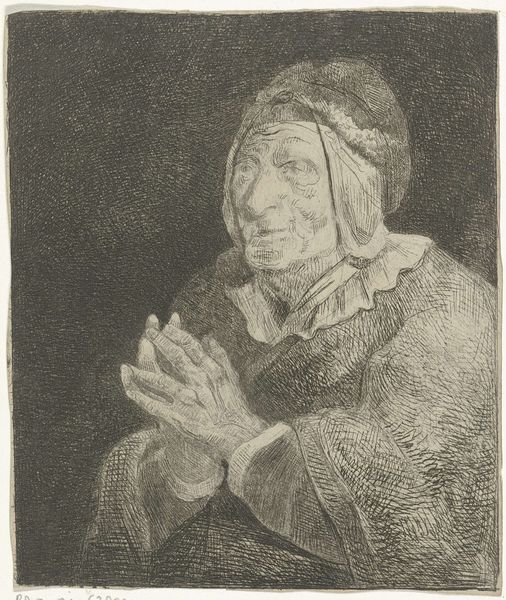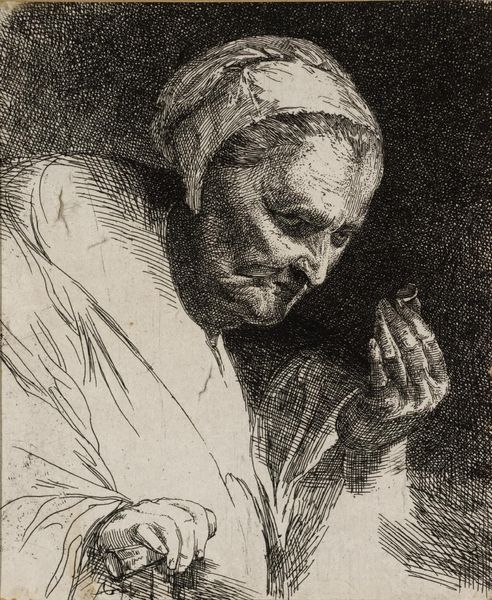
print, intaglio, engraving
#
portrait
#
baroque
#
dutch-golden-age
# print
#
intaglio
#
figuration
#
line
#
engraving
Dimensions: height 156 mm, width 111 mm
Copyright: Rijks Museum: Open Domain
Editor: This engraving, “Woman with Empty Purse” by Cornelis Bloemaert, dating from 1625 to 1633, certainly speaks of hard times. The level of detail in the woman's face is quite striking, emphasizing age and perhaps worry. What strikes you most about this print? Curator: What I see is a commentary on social and economic structures. During the Dutch Golden Age, there was burgeoning wealth, but also stark inequalities. Prints like this, widely distributed, served a public role. It invites viewers to consider their own social standing, or perhaps the plight of those less fortunate. The "empty purse" becomes a powerful symbol of economic anxiety. What do you think the inclusion of both a Latin and Dutch inscription achieves? Editor: Hmm, good question. I imagine the Latin might aim at a more educated, perhaps wealthier audience, while the Dutch makes it accessible to a broader public. Did the baroque style have an influence in the politics of the image? Curator: Absolutely. The Baroque, with its emphasis on drama and emotion, heightened the image's impact. The artist uses dramatic lighting and detailed linework to evoke sympathy, encouraging viewers to contemplate the implications of poverty. In this context, it pushes for, or against a specific kind of empathy and social action, depending on the political leaning. Editor: I hadn’t considered the dual audience aspect and how baroque stylization contributes to its persuasive power. Thanks for helping me see how this artwork operated within its socio-political landscape. Curator: And thank you. Thinking about the distribution of prints like this and who might have seen it, really underscores its intended impact in that time period.
Comments
No comments
Be the first to comment and join the conversation on the ultimate creative platform.
